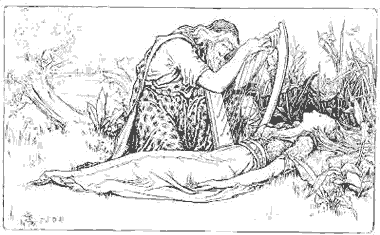

Let's have another look into the world of The English and Scottish Popular Ballads collected by Francis J. Childs in the 19th century. Recently, American fingerstyle guitarist Joe Rollin Porter recorded the popular Black Jack Davy (aka Raggle Taggle Gypsy) and Scottish singer Claire Hastings its variant Seven Gypsies. There are also new renditions of Who Put the Blood (aka Edward) by English duo Hickory Signals, Broom of the Cowdenknowes (Diane Ní Chanainn) and The Keach in the Creel (Megson).
"The Raggle Taggle Gypsy" (Roud 1, Child 200), is a traditional folk song that originated as a Scottish border ballad, and has been popular throughout Britain, Ireland and North America. It concerns a rich lady who runs off to join the gypsies (or one gypsy). Common alternative names are "The Raggle Taggle Gypsies O", "The Gypsy Laddie(s)", "Black Jack David" (or "Davy") and "Seven Yellow Gypsies".
In the folk tradition the song was extremely popular, spread all over the English-speaking world by broadsheets and oral tradition. It went under a great many titles, including "Black Jack Davy", "The Gypsy Laddie", "The Draggletail Gypsies", "Seven Yellow Gypsies" and "Johnnie Faa". According to Roud and Bishop,
"Definitely in the top five Child ballads in terms of widespread popularity, and possibly second only to 'Barbara Allen', the Gypsies stealing the lady, or, to put it the other way round, the lady running off with the sexy Gypsies, has caught singers' attention all over the anglophone world for more than 200 years. For obvious reasons, the song has long been a favourite with members of the travelling community."
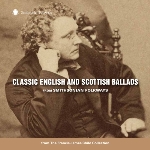
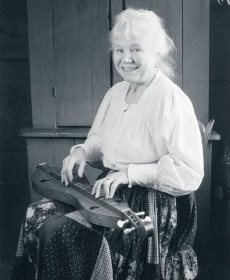 This one is purported to have been based on the story of a 17th-century outlaw, the gypsy Johnny Faa, and Lady Jane Hamilton, the wife of the Earl
of Cassilis. Faa was caught and hanged, and the lady was imprisoned for the rest of her life (Tosches 1996). It was first published in the early 18th century.
This one is purported to have been based on the story of a 17th-century outlaw, the gypsy Johnny Faa, and Lady Jane Hamilton, the wife of the Earl
of Cassilis. Faa was caught and hanged, and the lady was imprisoned for the rest of her life (Tosches 1996). It was first published in the early 18th century.
 She learned this version from Alice Snow Bailey of Readsboro, Vermont.«
She learned this version from Alice Snow Bailey of Readsboro, Vermont.«
The song was also published in books. Robert Burns used the song in his Reliques of Robert Burns; consisting chiefly of original letters, poems, and critical observations on Scottish songs (1808). Due to the Romanichal origins of the main protagonist Davie or Johnny Faa, the ballad was translated into Anglo-Romany in 1890 by the Gypsy Lore Society.
One version, collected and set to piano accompaniment by Cecil Sharp, reached a much wider public. Under the title "The Wraggle Taggle Gypsies O!", it was published in several collections, most notably one entitled English Folk Songs for Schools, leading the song to be taught to generations of English school children.
In America, the country music recording industry spread versions of the song by such notable musicians as Cliff Carlisle and the Carter Family, and later by the rockabilly singer Warren Smith, under the title "Black Jack David". In the American folk music revival, Woody Guthrie sang and copyrighted a version he called "Gypsy Davy" (which was later also sung by his son Arlo).
The Cecil Sharp sheet music version was occasionally used by jazz musicians, for example the instrumental "Raggle Taggle" by the Territory band Boots and His Buddies, and the vocal recording by Maxine Sullivan.
The core of the song's story is that a lady forsakes a life of luxury to run off with a band of gypsies. In some versions there is one individual, named, for example as Johnny Faa or Black Jack Davy. In some versions there is one leader and his six brothers. In one local tradition, the lady is identified as the wife of the Earl of Cassilis. In some versions the gypsies charm her with their singing, or even cast a spell over her. In a typical version, the lord comes home to find his lady "gone with the gypsy laddie". He saddles his fastest horse to follow her. He finds her and bids her come home, asking "Would you forsake your husband and child?" She refuses to return: in many versions preferring the cold ground ("What care I for your fine feather sheets?") and the gypsy's company to her lord's wealth and fine bed. At the end of some versions the husband kills the gypsies. In the local Cassilis tradition, they are hanged on the Cassilis Dule Tree.
The earliest text may be "The Gypsy Loddy", published in the Roxburghe Ballads with an assigned date of 1720. A more certain date is 1740, the publication of Allan Ramsay's Tea-Table Miscellany, which included the ballad as of "The Gypsy Johnny Faa". Differences between the two texts suggest that they derive from one or more earlier versions. They were followed by several printings, often copying Ramsay. It was then printed by most of the nineteenth century broadside printers.
In "The Gypsy Loddie"
As soon as her fair face they saw
They called their grandmother over
This is assumed to be a corruption of They cast their glamour over her (i.e. they cast a spell), not vice versa. This is the motivation in many texts for the lady leaving her lord; in others she leaves of her own free will.
In some texts the lord is identifies as "Cassilis", and a local tradition identifies him as the John Kennedy 6th Earl of Cassilis. B. H. Bronson discovered that a tune in the Skene manuscripts and dated earlier than 1600, resembles later tunes for this song and is entitled "Lady Cassiles Lilt". The inference is that a song concerning Lord and Lady Cassilis existed before the two earliest manuscripts, and was the source of both.
Nick Tosches, in his Country: The Twisted Roots of Rock 'N' Roll, spends part of his first chapter examining the song's history. He compares the song's narrative to the Greek myth of Orpheus and Eurydice. The ballad, according to Tosches, retells the story of John Faa, a 17th-century outlaw, described as a Scottish Gypsy, and Lady Jane Hamilton, wife of The Earl of Cassilis. Lord Cassilis led a band of men (some sources say 16, others 7), to abduct her. They were caught and hanged on the "Dool Tree" in 1643. The "Gypsies" were killed (except for one, who escaped) and Lady Jane Hamilton was imprisoned for the remainder of her life, dying in 1642.
The song "The Whistling Gypsy" also describes a lady running off with a "gypsy rover". However, there is no melancholy, no hardship and no conflict. Her father rides after her and discovers that the "gypsy" is really a rich lord.
The song "Lizzie Lindsay" has a similar theme. Robert Burns adapted the song into "Sweet Tibby Dunbar", a shorter version of the story. There is also a children's version by Elizabeth Mitchell which has lyrical content changed to be about a young girl "charming hearts of the ladies", and sailing "across the deep blue sea, where the skies are always sunny".
Although the hero of this song is often called "Johnny Faa" or even "Davy Faa", he should not be confused with the hero/villain of "Davy Faa (Remember the Barley Straw)". [Silber and Silber misidentify all their texts] as deriving from "Child 120", which is actually "Robin Hood's Death". According to The Faber Book of Ballads the name Faa was common among Gypsies in the 17th century.

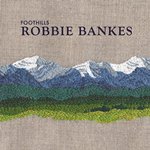 @ FROG www.robbiebankes.com |
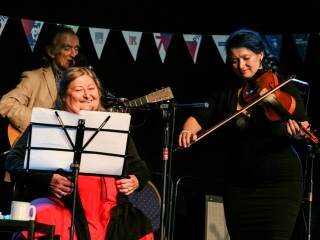
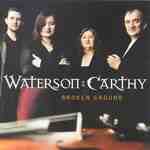 |
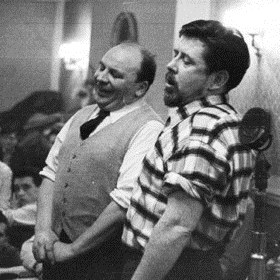  |

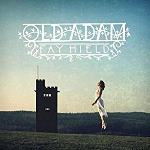

Listen to Raggle Taggle Gypsy / Seven Yellow Gypsies / Black Jack Davy from:
An Rinn, Robbie Bankes, Martin Carthy, Dream Catcher, Julee Glaub, Claire Hastings, Fay Hield, Johnny Logan, Planxty (1973), Planxty (2004), Joe Rollin Porter, Pressgang, Mike Scott & Carlos Nunez, Emily Smith, Ian Smith, Steeleye Span, James Talley, Tinkers With Talent, Uncle Bard & The Dirty Bastards, Waterson:Carthy
Watch Raggle Taggle Gypsy / Seven Yellow Gypsies / Black Jack Davy from: Martin Carthy, Clancy Brothers, Sandy Denny, FullSet, Fay Hield, Fay Hield (Live), The Led Farmers, Christy Moore, Planxty, Joe Rollin Porter, Show of Hands, Steeleye Span, Waterboys, Waterson:Carthy, The White Stripes Lyrics (© Mainly Norfolk): The Gypsy Laddie / Seven Yellow Gipsies / Raggle Taggle Gipsies Gypsy Davey / Gypsum Davy / Black Jack Davy / Gypsy Rover
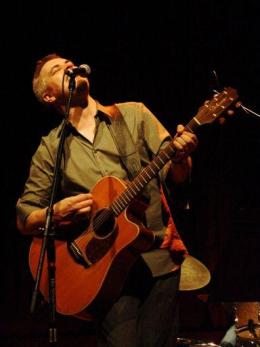
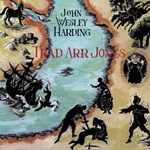
It's all about a little holly bush That might have made a tree.The lines are possibly explained by a glance at some of the other versions, where the son has made love to his sister and subsequently killed her when she turns out to be pregnant. The holly bush could reasonably represent some kind of guarded reference to this incident; the incident itself having been excluded from the song.« (Nic Jones)


"Edward" is a traditional murder ballad existing in several variants. In English its versions were collected by Francis James Child as Child Ballad number 13. The Roud number is 200.
A mother questions her son about the blood on his sword. He puts her off with claims that it is his hawk or his horse, in some combination, but finally admits that it is his brother, or his father, whom he has killed. He declares that he is leaving and will never return, and various creatures (wife, children, livestock) will have to fare without him. His mother then asks what she will get from his departure. He answers "a curse from hell" and implicates his mother in the murder.
This ballad may not be complete in itself. Large portions of the ballad are also found in the longer ballads "The Twa Brothers" (Child 49) and "Lizie Wan" (Child 51).
This ballad type was also found in Northern Europe, where it is often known under "Svend i Rosensgård" or a similar name. Its general Scandinavian classification is TSB D 320, and it is known in Danish (DgF 340), Icelandic (IFkv 76), Norwegian, and Swedish (SMB 153). In Finland, it is popular as "Poikani Poloinen", both as a poem and as a song, first published in the collection Kanteletar.
In the Scandinavian versions, and the Finnish one, the stress is more on the gradual divulge of the fact that the son will never return home to his mother.
Versions collected orally in Ireland are usually named "What Put the Blood" or similar. The version sung by County Fermanagh traditional singer Paddy Tunney is on his Folk-Legacy CD The Man of Songs. He called it "What put the Blood on Your Right Shoulder, Son?"
Ellen Connors of County Wexford called it "What Brought the Blood".
The versions collected from traveller John ("Jacko") Reilly in the 1960s in Boyle, County Roscommon became very popular in Ireland, as they were recorded by folk singers of the day. There are recordings by Christy Moore, The Johnstons, Karan Casey, Al O'Donnell and others.
The authenticity of one popular version of this ballad (Child 13B) has been called into question. This version originally appeared in print in Bishop Percy's 1765 edition of Reliques of Ancient English Poetry. Percy reported that he received this Scottish ballad from Sir David Dalrymple, who said he heard it from an unnamed lady. This version appears inauthentic because it seems, in short, too "good": it makes exceptional use of literary devices for maximum impact. Moreover, unlike most other versions, the father is the victim rather than the brother, and the mother receives a curse at the end. There is also little evidence that this version was disseminated orally; it seems to have appeared most often in print form.
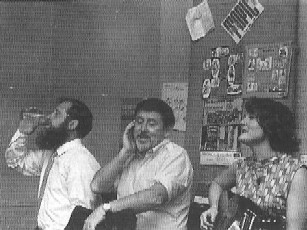
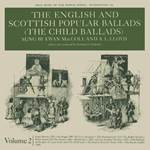 |

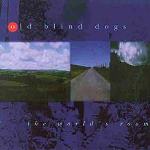 |
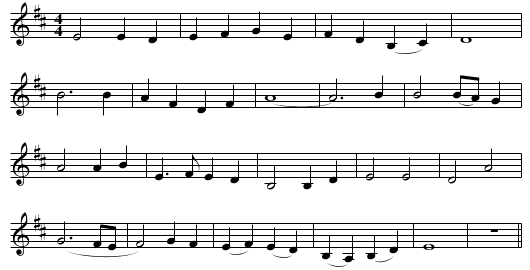
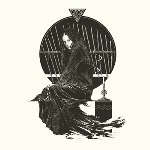
Listen to Edward / What Put the Blood / My Son David from: Karan Casey, Crooked Jades, Tim Eriksen, Hickory Signals, Pat Kilbride, Jeana Leslie & Siobhan Miller, Lynched, Nua, Old Blind Dogs, Old Blind Dogs (Live), Readman & Bice, Alasdair Roberts, Jeannie Robertson, Pauline Scanlon, Deirdre Starr, Steeleye Span, Strömkarlen, June Tabor, Tradish, James Yorkston
Watch Edward / What Put the Blood / My Son David from: The Alt, Hickory Signals, Fay Hield, Lankum, Jeana Leslie & Siobhan Miller, Malinky, Old Blind Dogs, Oyster Band & June Tabor, Deirdre Starr, Steeleye Span Lyrics (© Mainly Norfolk): Edward / My Son David / Henry

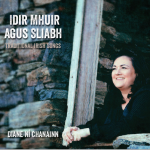
"Broom of the Cowdenknowes", also known as "Bonny May", is a traditional Scottish love ballad, Child #217. It has been traced to the seventeenth century, but its exact origin is unknown.
The title of the song references the Scotch Broom (Cytisus scoparius) flower, a vibrant yellow flower found throughout Scotland, including Cowdenknowes, a Scottish barony east of the Leader Water (River Leader), 32 miles southeast of Edinburgh in Berwickshire.
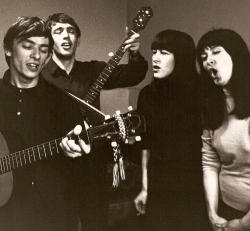
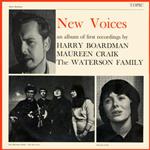
The original and extended ballad was the story of a young shepherdess who falls in love with a stranger on horseback, who rides by her pasture every day. The song became popular across Scotland and England towards the end of the reign of James Vl & I, and the earliest publication date found is 1651. The melody was also published as a dance tune, during the same year, in John Playford's first edition of The English Dancing Master.
Throughout the many versions of the popular folksong, there are many lyrical variations, but the plot remain consistent. The shepherdess and stranger fall in love and have an affair. When she becomes pregnant, she is banished from her country. She seeks out her lover, finding him to now be a wealthy lord. They marry, but she is never truly happy away from her own country, and she pines for "the bonnie bonnie broom".
Traditionally, the song is sung from the perspective of the shepherdess. The broom, a tall shrub which blooms with spikes of small golden flowers, once grew abundantly on hillsides of the Scottish Borders.

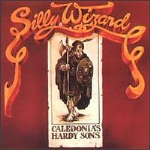
Listen to Broom of the Cowdenknowes from: Diane Ní Chanainn, Rose Laughlin, The McCalmans, An Rinn, Silly Wizard
Watch Broom of the Cowdenknowes from: Donal Clancy, Archie Fisher, Dave Gunning & J.P. Cormier, The McCalmans Lyrics (© Mainly Norfolk): The Broom of Cowdenknowes / Bonny May
The Keach I the Creel is Child ballad 281.


A young woman tells a man that her parents keep her too close for them to meet. The man has his brother make a ladder and a pulley to hoist a basket (creel) down the chimney; the ladder takes him to the chimney, and riding in the large creel he is lowered into her bedroom. Her mother guesses there is a man in the daughter's bed and sends the father. She hides her lover and persuades her father she was praying. Her mother, still suspicious, goes herself. She trips and is caught ("keach" being catch, "keach i the creel" being "the catch in the basket" - usually referring to fish caught and stored in a basket slung from the fisherman's hip or shoulder) in the creel and tossed all about in it; the father professes that he's fed up with all of them, for he's had no rest all the night with the goings-on.
 |
 »Here we observe the correct method for obtaining access to the charming Natalie who lives with her doting but insomniac parents. Rope, a ladder and some sort of basket may be easily obtained from any hardware store or fetish shop. In the event of a emergency, get an accomplice to frighten the living daylights out of the strumpet's fragile old mother.« |
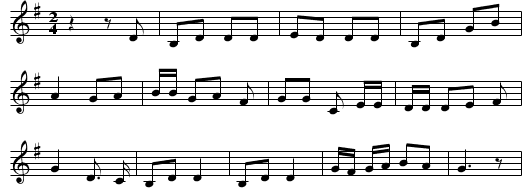
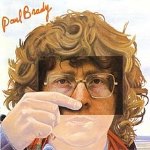
Listen to The Keach in the Creel from: Paul Brady, Megson, Pilgrims' Way
Watch The Keach in the Creel from: Paul Brady, Noctambule, Quilty Lyrics (© Mainly Norfolk): Ride in the Creel / Keek in the Creel / Wee Toun Clerk

Text is available under the Creative Commons Attribution-ShareAlike License.
Date: June 2019.
Photo Credits:
(1) Joe Rollin Porter,
(2) Margaret MacArthur,
(3) Claire Hastings,
(4) Robbie Bankes,
(5),(17) Waterson:Carthy,
(6) A.L. Lloyd,
(7),(14) Fay Hield,
(9) John Wesley Harding (Wesley Stace),
(10) Hickory Signals,
(12),(20) Ewan McColl,
(13) Jim Malcolm,
(16) Diane Ní Chanainn,
(21) Pilgrims Way
(unknown/website);
(8) 'The Raggle Taggle Gypsy',
(15) 'Edward',
(18) 'Broom of the Cowdenknowes',
(22) 'The Keach in the Creel'
(by ABC Notations);
(11) June Tabor
(by Walkin' Tom);
(19) Megson
(by The Mollis).